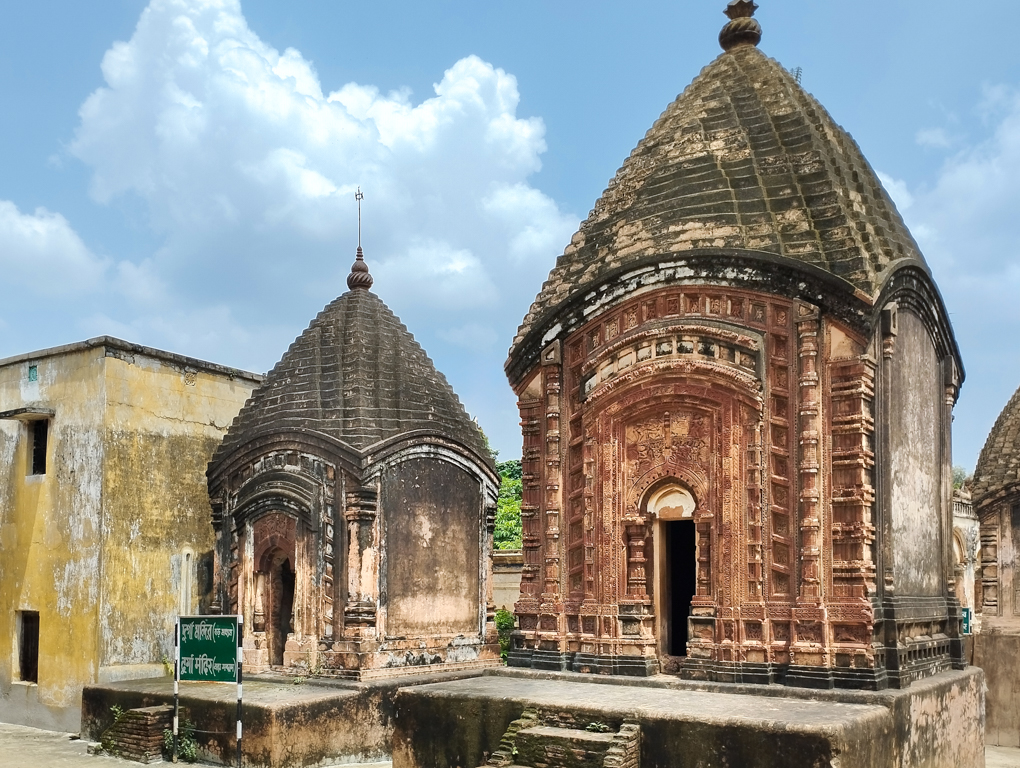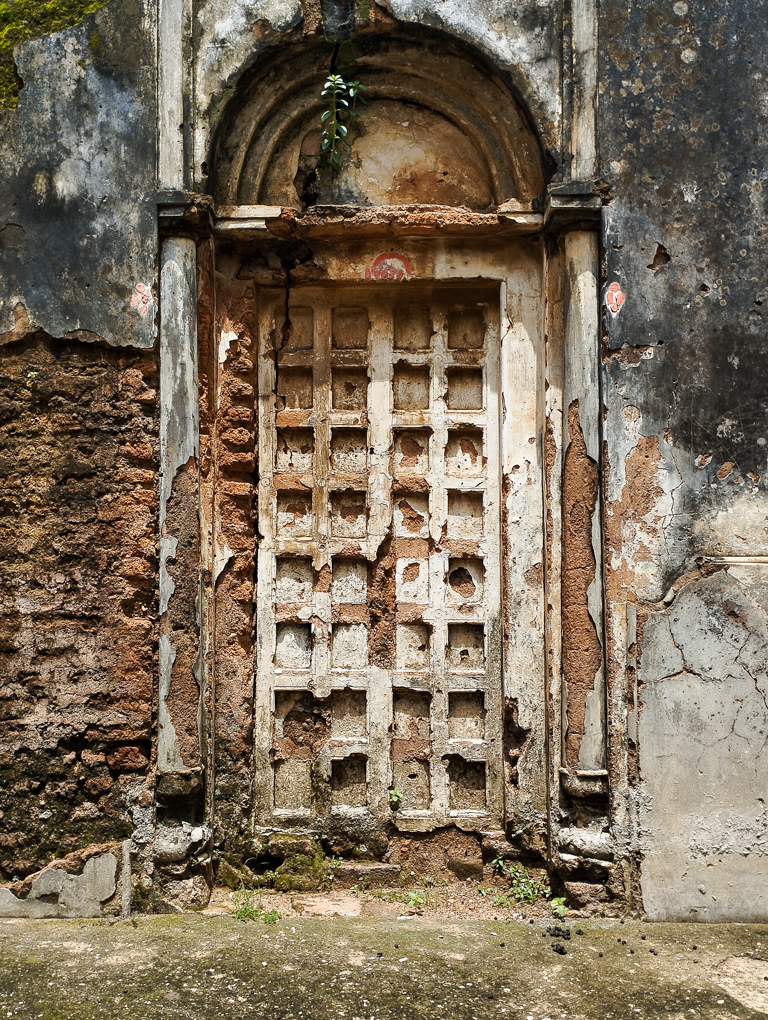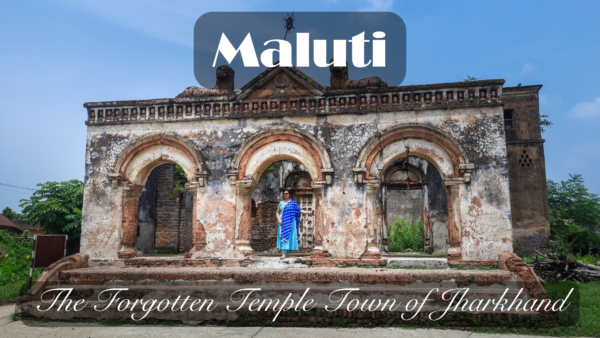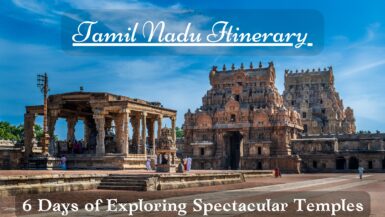The sacred landscape of India is teeming with infinite numbers of temples across its length and breadth. Most of the age-old temples have been repaired, restored, and preserved, thanks to the government’s efforts. However, plenty of others remain neglected and in dire need of protection. Heritage structures have a life of their own. Like forests and wildlife, heritage monuments require protection and planned conservation as they play a crucial role in piecing together India’s past.
Recently, we came across one such heritage site which is reeling under the threat of gradual extinction. The place is called Maluti, an otherwise ordinary tribal village located on the Jharkhand – West Bengal border. Maluti is home to 72 dilapidated terracotta temples. Some 400 years old, these temples possess ornate terracotta carvings and bear testimony to the brilliance of the Bengali terracotta artists. Unfortunately, owing to the lack of government endeavours, these temples are on the verge of complete ruination.

Table of Contents
History of Maluti:
According to some scholars, Maluti dates back to the era of the Shunga dynasty (185 – 75 BCE). There is even mention of a king of Pataliputra, who performed Ashwamedha Yajna here. Later, it became a seat of Vajrayana Buddhism.

Historical accounts later mention Maluti in the 15th century CE. Alauddin Hussain Shah, the Sultan of Gour, had once camped near Maluti. During this sojourn, the Sultan’s Begum had lost her favourite pet, a hawk or Baaj in Bengali. The hawk was rescued by a local, poor farmer named Basanta. The Sultan was pleasantly impressed and gifted him several acres of nearby land. The lucky farmer also received the epithet ‘Baaj’ for saving the hawk and came to be known as Raja Baaj Basanta.

Baaj Basanta established his rule in the ‘Nankar’ or tax-free region, awarded to him by the Sultan. The fortune continued to smile upon the dynasty of Baaj Basanta till his great-grandson Rajchandra was defeated and played by the King of Rajnagar. Thereafter, his four sons shifted their capital to Maluti in around 1680 CE.

The four sons however lived separately. The eldest son was Rakharchandra, and his side was designated as ‘Raj Bari’ or the house of the King. The house of the second son, Prithivichandra, was called ‘Madhyam Bari’ or the second house. Ramchandra was the third brother, and his portion was named ‘Shikir Bari’ or house of the one-fourth share. The fourth and last brother, Madhavchandra, had six sons, and therefore his line came to be known as ‘Chhai Taraf’ or house of the six.

The four dynastic lines of Baaj Basanta went on a frenzied spree of constructing temples. Competition was stiff and each house aimed to excel the others by building more and more temples with terracotta decorations. As many as 108 temples were built by them in Maluti. As a result of their relentless effort, Maluti was soon converted into a temple town and even called ‘Gupto Kashi’ or hidden Kashi by many.

Origin of the name ‘Maluti’:
As per the prevalent opinion, the word ‘Maluti’ is derived from the name of Mouliksha, the principal deity of the village.
According to another version, Maluti was part of the dominion of the Malla rulers of Bishnupur. The kingdom of Malla rulers was called Mallabhum. It is believed that the name ‘Maluti’ was derived from the term ‘ Mallabhum’.

Mouliksha Temple of Maluti:
Maa Mouliksha is the tutelary deity of Maluti. The origin of the goddess is rooted in Vajrayana Buddhism. She is regarded as the elder sister of Maa Tara of Tarapith. Hence, along with Tarapith, Maluti used to be a centre for practising tantra. Sage Bamakhyapa had first attained ‘siddhi’ by offering prayers to Maa Mouliksha. A temple dedicated to Bamakhyapa inside the Mouliksha Temple complex preserves his trident and conch shell.
The Mouliksha Temple is a modest structure. Inside the sanctum, there resides the goddess who is manifested only by a face engraved on a stone. Her face is characterised by prominent eyes. The temple remains open throughout the day.

The terracotta temples of Maluti:
Apart from the Moulikhsa Temple, the prime attraction of Maluti is the group of terracotta temples built by the descendants of Baaj Basanta. The temples are broadly divided into four clusters – the first cluster belonging to ‘Madhyam Bari’, the second cluster comprising ‘Raj Bari’ and ‘Shakir Bari’, and the last one affiliated to ‘Chhai Taraf’. Besides, remnants of several other temples are scattered around the village.
Of the 108 temples, only 72 have survived to this day. Most of the temples follow the traditional ‘Char Chala’ or four-roofed style. A few temples are also made in ‘Rekha Deul’ style. The temples are decorated with terracotta carvings on their exterior. A handful of scholars argue that these plaques are made of local sandstone called ‘phool pathar’. However, most of the experts deny this.

The majority of the terracotta works have not pulled through. The most common terracotta sculpture found above the doorway of the temples depicts the Rama – Ravana battle. But they are not mere replicas of one another and subtle difference exists. In one carving, you will notice Ravana charging at Rama on a chariot, in another Ravana is flaunting a decorative footwear. Likewise, some carvings showcase Rama riding the shoulders of Hanuman while fighting Ravana, while in others he is on foot and accompanied by Hanuman and Lakshmana.


Another favourite subject is Goddess Durga as Mahisasuramardini. In a few temples, the Mahisasuramardini panel is found above the doorway. Also, Durga along with her four children is found above the arch panel in the majority of the temples here.

Terracotta sculptures also show the Dashavatars of Vishnu and Krishna Leela. You will also notice marching soldiers, village scenes, animal figures, geometric patterns, and floral motifs. Some temples also bear inscriptions in an early Bengali script, mentioning the details of building the temples.


Nearly all the temples were dedicated to Lord Shiva and still house wrecked Shiva lingas. Barring one, all have fallen out of use. One or two temples were dedicated to Kali.

Future of Maluti:
Maluti is a treasure trove of our country’s heritage. Sadly, the exquisite terracotta temples lay waste here without any active government intervention. No protective signage by the Archaeological Survey of India is visible here. Thanks to the efforts of the local people, the temples are protected and preserved. The locals are quite proud of their heritage and will enthusiastically show you around.

Recently, an NGO called “Save Heritage & Environment” has taken active initiative to conserve the temples. Also, the Global Heritage Fund released a report in 2010 titled “Saving Our Vanishing Heritage”, where Maluti temples were listed along with 12 other worldwide sites as ‘on the verge of irreparable loss and destruction’. It cited insufficient management as the main cause of Malta’s gradual decay.

The Global Heritage Fund in association with Indian Trust for Rural and Heritage Development has undertaken positive steps for the conservation of the temples in Maluti by strengthening and educating the local people.

Important FAQs:
Where is Maluti located?
Maluti is a nondescript hamlet in the Shikaripara block under the Dumka subdivision of Jharkhand. The Dumka town lies 60 km away from here. It is located on the Jharkhand – West Bengal border.
How can I reach Maluti?
Although Maluti is situated in the state of Jharkhand, its nearest rail station is the dingy town of Rampurhat in the Birbhum district of West Bengal. Rampurhat is just 13 km, and well-connected with Kolkata as well.
You can catch 13017 Ganadevta Express (6-05 AM from Howrah), 13053 Kulik Express (8-55 AM from Howrah), 13187 Maa Tara Express (7-20 AM from Sealdah), 13173 Kanchanjungha Express (6-35 AM from Sealdah, and 13161 Tebhaga Express (12-55 PM from Kolkata).
You can also avail of SBSTC and NBSTC buses from Esplanade to reach Rampurhat.
Where can I stay in Maluti?
Sadly, there is no option for accommodation in Maluti itself. You have to stay either in Rampurhat or the renowned pilgrimage town of Tarapith (18 km from Maluti).
We suggest clubbing Maluti as a day trip while visiting Tarapith. Moreover, Tarapith has a wide range of hotels and lodges suiting every pocket such as Hotel Sonar Bangla, Bam Tara Hotel, Binapani Hotel, Hotel Blue Star, and Madhu Mamata Hotel.

Is there any eatery here?
Except for a shack near Mouliksha Temple selling tea, biscuits, and piping hot ‘Aloor Chop’, you will find no eateries here. Like accommodation, you need to rely on Rampurhat or Tarapith for food.
What is the best time to visit here?
The winter months (November to February) are perfect for visiting Maluti. Avoid summer at all costs, as it gets excruciatingly hot.

What are the other nearby places to visit?
- You can easily visit Nalateshwari Temple in Nalhati, one of the 51 Shakti Peethas where the throat of Sati had fallen. Naihati is 30 kms from Maluti.
- As already mentioned, Maa Tara Temple in Tarapith is near Maluti. So you can also include it in your plan.
- If you have enough time, you can also visit Bakreshwar, renowned for its Shiva Temple and hot spring. From Maluti, Bakreshwar is 60 km.
- Furthermore, you can also extend your plan by adding Bolpur Shantiniketan, which is a 2-hour drive from Maluti.



